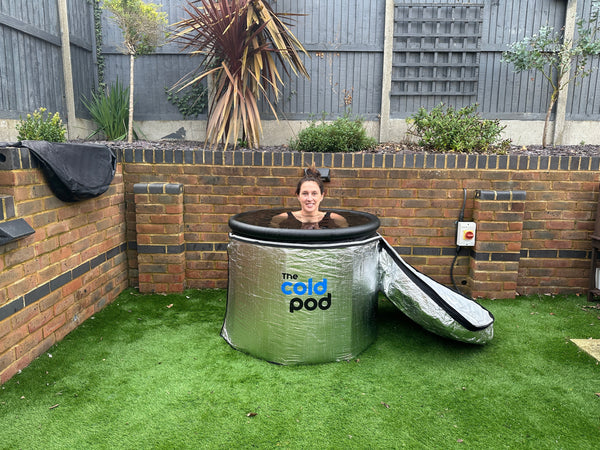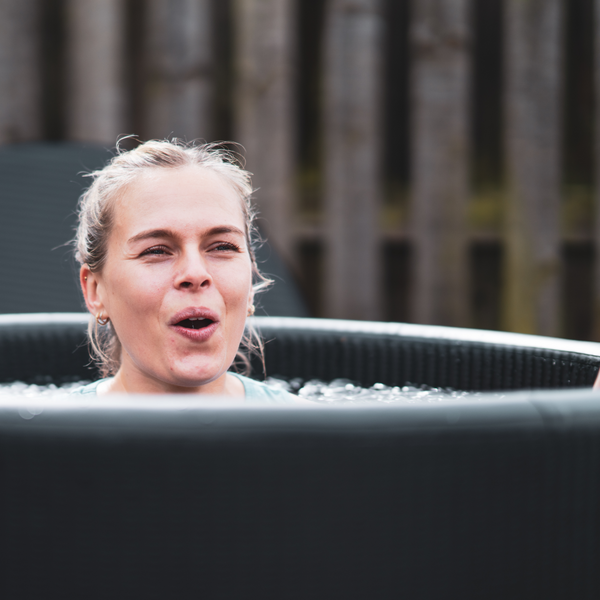In today’s fast-paced and perpetually connected world, prioritising mental and physical well-being is more crucial than ever. As we seek to find moments of tranquillity and respite from our hectic lives, the practice of meditation has long been hailed as a means to achieve inner peace and balance. However, an ancient therapy is making a splash in the modern wellness scene, offering a refreshing alternative to traditional meditation: hydrotherapy.
Hydrotherapy, a therapeutic practice that harnesses the restorative powers of water, has been revered for centuries. From the Roman baths to modern-day spas, water has been utilised for its capacity to heal, relax, and rejuvenate both the body and mind.
The History of Hydrotherapy
From the Roman baths to Turkish hammams, people have been harnessing the power of water for healing and relaxation throughout history. Ancient Greeks and Egyptians also considered water an essential element for physical and mental well-being. With the progression of time and the development of modern medicine, the understanding of hydrotherapy has evolved, leading to a wide range of therapeutic applications.
Physiological Effects of Water Immersion
- Buoyancy: Water immersion creates a sense of weightlessness, which eases the strain on joints and muscles. Improved flexibility and easier movement are made possible by this buoyancy, especially for people with chronic pain or injuries.
- Hydrostatic Pressure: The pressure of water on the body can boost circulation, which can help to reduce swelling and relax tense muscles. This pressure helps the lymphatic system’s efficient functioning as well as helping the body’s natural cleansing process.
- Thermotherapy: The temperature of the water used in hydrotherapy can have varying effects on the body. Cold water immersion, for instance, has gained popularity for its invigorating effects and ability to reduce inflammation. On the other hand, warm water relaxes muscles and soothes aches and pains. Both temperatures can be employed in contrast therapy, alternating between hot and cold water to stimulate circulation and promote recovery.
Psychological Effects of Hydrotherapy
- Stress Reduction: Endorphins and other chemicals that improve mood can be released during hydrotherapy; particularly cold water immersion. These substances can help with lowering stress and encouraging calmness and relaxation.
- Improved Mood and Relaxation: Submerging yourself in water; especially in a peaceful environment, can encourage a meditative state. Cold water immersion has been shown to increase the production of mood-boosting neurotransmitters, helping to alleviate anxiety and depression.
- Enhanced Mental Clarity: Ice bathing stimulates the nervous system and increases blood flow to the brain. This invigorating effect can sharpen cognitive function and improve focus, providing a mental boost that lingers long after the water therapy session has ended.
Hydrotherapy Techniques
Hydrotherapy has changed over time meaning many different techniques have been designed, to meet a variety of needs.
- Floatation Therapy: Floatation therapy involves floating in a sensory deprivation tank filled with body-temperature saltwater. This environment allows the body to experience weightlessness, relieving pressure on joints and muscles while providing a peaceful atmosphere for the mind to relax. The high salt content of the water increases buoyancy, making it easy to float effortlessly, and the sensory deprivation can lead to deep meditation and even profound self-reflection.
- Aquatic Exercise: Aquatic exercise, also known as water aerobics, utilises the resistance and buoyancy of water to provide a low-impact workout that is gentle on the joints. By performing exercises in water, individuals can improve their strength, flexibility, and cardiovascular fitness while reducing the risk of injury.
- Contrast Therapy: Contrast therapy, also known as hot and cold therapy, involves alternating between warm and cold water to stimulate circulation and aid in muscle recovery. The temperature fluctuations cause blood vessels to constrict and dilate, promoting blood flow and helping to flush out toxins and lactic acid. Our Cold Pod is the perfect tool to complete this therapy from the comfort of your own home.
- Balneotherapy: Balneotherapy refers to the practise of submerging the body in mineral-rich water, which is commonly found in natural hot springs or specialised spa facilities. The skin, muscles, and joints, as well as general health, can benefit from the therapeutic properties of minerals like magnesium, calcium, and sodium bicarbonate.
Hydrotherapy vs. Meditation
While hydrotherapy and meditation share some similarities in promoting relaxation and mental well-being, they also possess distinct differences and unique benefits.
Similarities between Hydrotherapy and Meditation
- Stress Reduction: Both methods encourage a sense of peace by releasing feel-good hormones thus reducing stress.
- Mindfulness: Meditation and hydrotherapy both encourage mindfulness and self-awareness; helping individuals to achieve a deeper sense of inner calm and emotional balance.
- Enhanced Mental Clarity: Both practices can enhance concentration; cognitive function and creativity.
Differences between Hydrotherapy and Meditation
- Physical Benefits: While meditation primarily targets mental well-being, hydrotherapy offers additional physical benefits, such as improved circulation; muscle relaxation, and pain relief.
- Sensory Experience: Meditation often focuses on the breath and stillness, while hydrotherapy incorporates the tactile and sensory experience of water, providing a unique and immersive approach to relaxation.
- Accessibility: Since the soothing qualities of water can make it simpler to enter a meditative state, hydrotherapy may be more approachable for some people who have trouble with traditional meditation.
Combining Hydrotherapy and Meditation
By integrating hydrotherapy and meditation, one can harness the unique benefits of both practices, creating a comprehensive wellness routine that addresses both physical and mental well-being. Techniques such as floatation therapy already combine elements of meditation and mindfulness with the healing properties of water, offering a holistic approach to relaxation and self-care.
Embracing both hydrotherapy and meditation can provide a well-rounded approach to maintaining balance and well-being in our modern, fast-paced lives.
Incorporating Hydrotherapy into Daily Life
Making hydrotherapy a part of your regular self-care routine can provide numerous physical and mental benefits, contributing to a greater sense of balance and well-being.
- Finding Hydrotherapy Facilities: Many spas offer a variety of hydrotherapy treatments, such as floatation therapy. You can also find aquatic exercise classes at local public pools and leisure centres, providing an affordable and accessible option for water-based workouts. If you’re fortunate enough to live near natural hot springs or mineral-rich bodies of water, you could consider visiting these for a free, outdoor experience.
- Creating a Home-Based Hydrotherapy Experience: If you’re looking to enjoy the benefits of cold water immersion at home, consider incorporating a cold shower or an ice bath into your routine. Start with a shorter duration and gradually increase the time as you climatise to the temperature. Our Cold Pod is the perfect tool to complete this therapy from the comfort of your own home.
By incorporating hydrotherapy into your daily life, you can enjoy the numerous physical and mental benefits this ancient practice has to offer, providing a refreshing and soothing alternative to traditional self-care routines.







